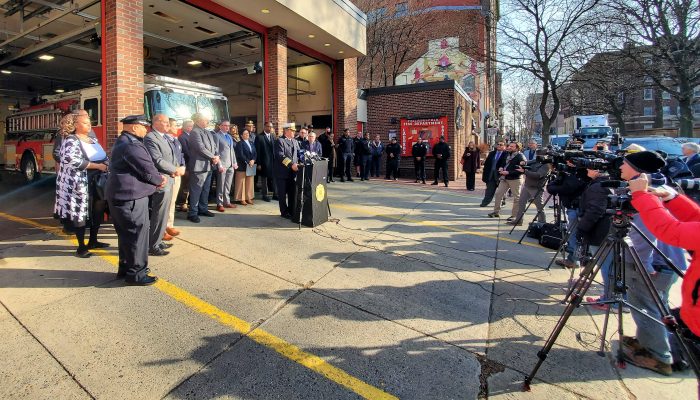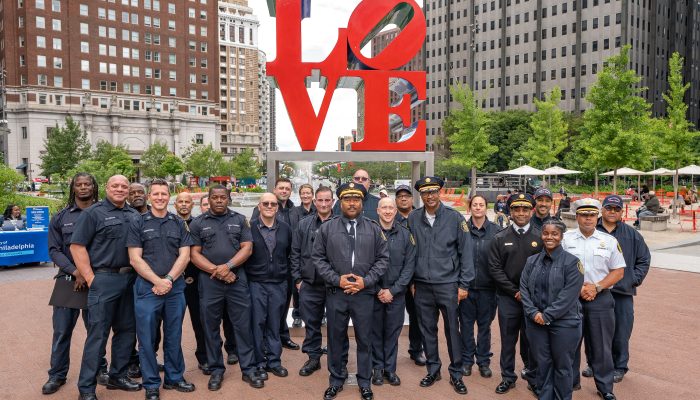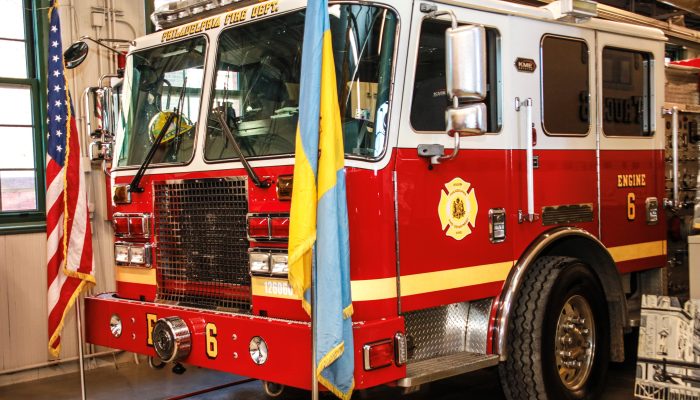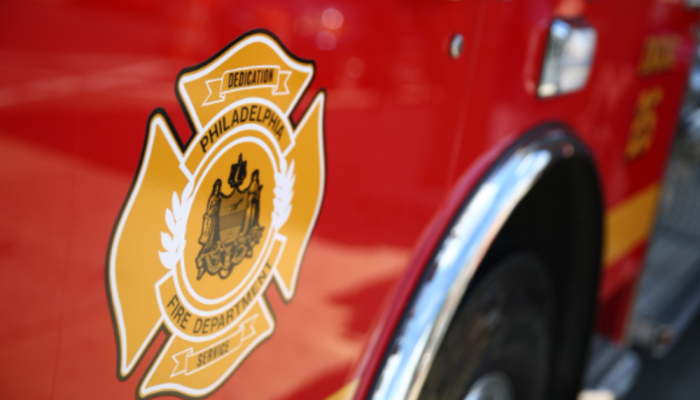The Philadelphia Fire Department and national officials this week sounded the alarm on the fire problem in the U.S., outlining a comprehensive strategy to combat the scourge that last year killed 2,500 Americans.
Forty-one people died from fires in this city in 2022, while nearly 200 were injured and about 2,000 displaced — “and that is despite the incredible efforts of the women and men who fight those fires, and who provide emergency medical care to the survivors,” said Fire Commissioner Adam K. Thiel.
“Fires are burning hotter and faster than ever before,” Thiel said. “We are doing everything we can, and it is simply not enough.”
Thiel spoke on Jan. 11 at Engine 8 in Old City along with representatives from the U.S. Fire Administration, Fire Safety Research Institute, International Association of Fire Fighters, National Fire Protection Association, and National Fallen Firefighters Foundation. It was the second stop of a tour that began in New York on Jan. 10 and continued in Washington on Jan. 12.
Philadelphia and New York were chosen because of devastating fires that took place just days apart in January 2022 – the Fairmount fire, which killed 12 family members in Philadelphia, and the Twin Parks fire in the Bronx, which killed 17 people.
U.S. Fire Administrator Dr. Lori Moore-Merrell and other fire service leaders used the tour to highlight several facts about the fire problem:
- During a fire today, you have the least amount of time to safely exit your burning home than in any time in history.
- Your chance of dying in a fire today is higher than 40 years ago.
- Fire deaths, injuries and displacement disproportionately affect lower-income communities and people of color. Safe and affordable housing should not be mutually exclusive. A compounding problem in cities across America is that those who survive are displaced long term or become homeless due to a lack of personal or local resources.
- About 99 million people — or a third of the U.S. population — now live in the wildland urban interface (WUI), yet most have no idea what WUI is or the dangers it poses.
- Fire departments across the U.S., both career and volunteer, are experiencing dramatic personnel shortages.
- Technology, including micromobility products powered by lithium-ion batteries (such as e-bikes and e-scooters), are providing a new wave of fire causes.
- Automatic fire suppression systems like sprinklers save lives, yet resistance to these devices remains.
Moore-Merrell noted two new federal laws to help battle the problem: one gives the U.S. Fire Administration authority to investigate safety issues after major fires; the other – inspired by the Fairmount fire – requires hard-wired and/or tamper-proof smoke alarms in public housing. But more solutions are needed, she said.
“Fire remains a serious threat to public safety,” said Moore-Merrell, “and America is still burning.”
The U.S. Fire Administration’s new national fire strategy based on five goals:
- Preparing all firefighters for the climate-driven increase in wildfires in the wildland urban interface (WUI) by providing them with the proper training and equipment.
- Investing in a national apprenticeship program to address the shortage of firefighters and to make the fire service more diverse and inclusive.
- Establishing a comprehensive firefighter cancer strategy that invests in research, provides access to screening for firefighters, and reduces and eliminates exposure to dangerous contaminants such as PFAS, otherwise known as “forever chemicals,” which have been linked to cancer and other health problems.
- Providing behavioral health resources and suicide prevention initiatives for all firefighters.
- Creating safer communities by implementing and enforcing codes and standards, especially in the WUI and in underserved and vulnerable populations providing affordable and fire-safe housing.
You can read more about the strategy here.




